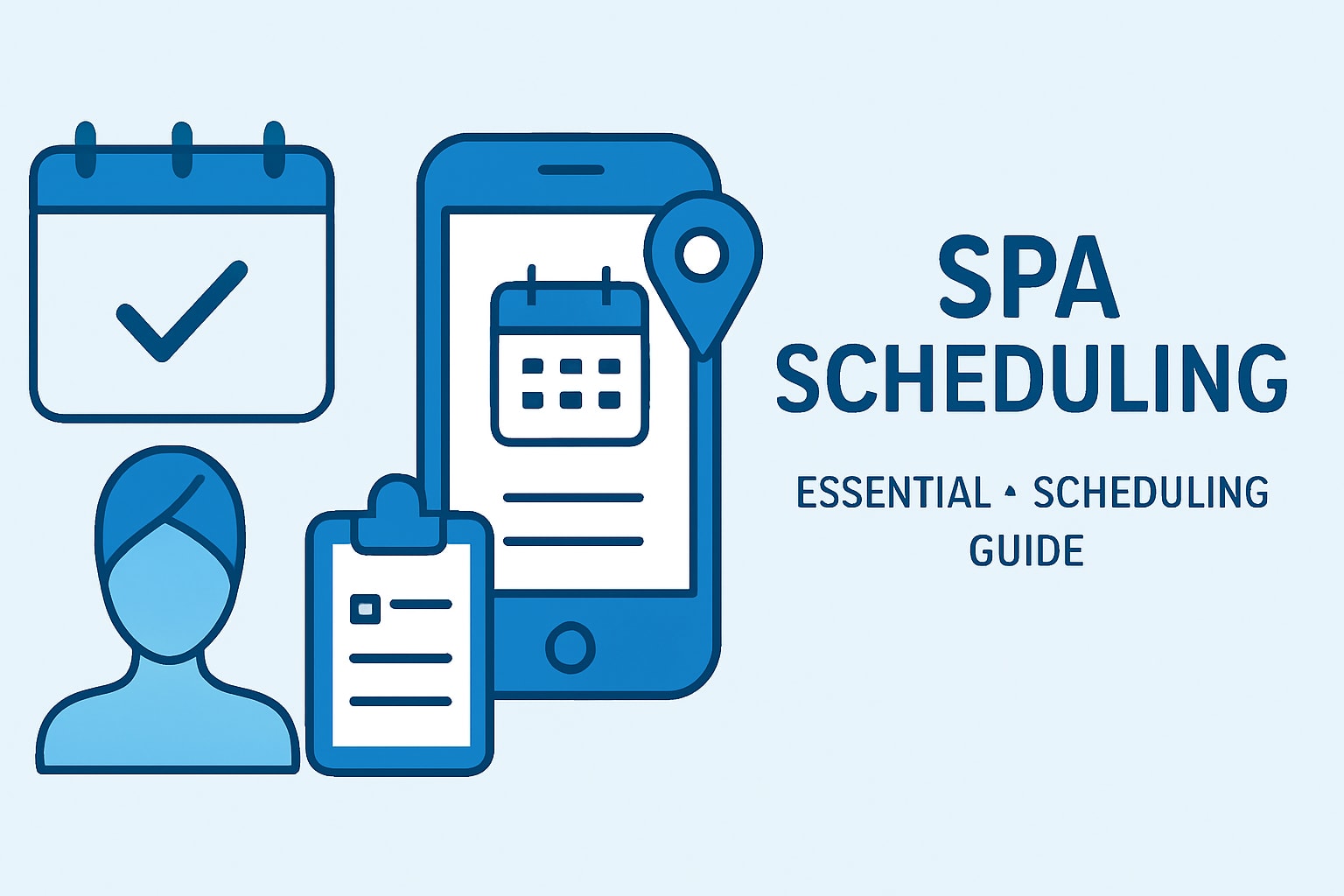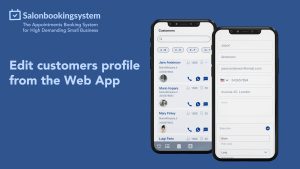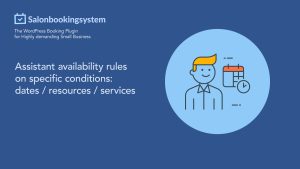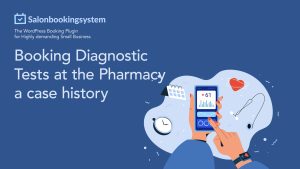In 2025, spa clients expect seamless, personalized experiences from the moment they book to the moment they leave. As the wellness industry evolves, the demand for efficient spa scheduling continues to surge, directly impacting client satisfaction and business growth. However, many spas still struggle with outdated or manual scheduling systems, leading to double bookings, no-shows, and lost revenue. To stay competitive, mastering spa scheduling is essential. This guide will reveal proven strategies, actionable steps, and the latest tools to help you optimize your spa’s scheduling. You’ll discover how to overcome common challenges, streamline workflows, and deliver exceptional experiences—setting your business up for success in the year ahead.
Understanding Spa Scheduling Challenges in 2025
The spa industry is experiencing rapid transformation as client expectations climb and competition intensifies. More spas are expanding their offerings, embracing wellness tourism, and catering to increasingly tech-savvy guests. Clients now expect instant confirmation when booking and prefer digital interactions over phone calls or walk-ins. In fact, 72% of spa clients now book appointments online, reflecting a shift toward convenience and immediacy. With new services and experiences entering the market, spas must adapt their spa scheduling processes to stay ahead.
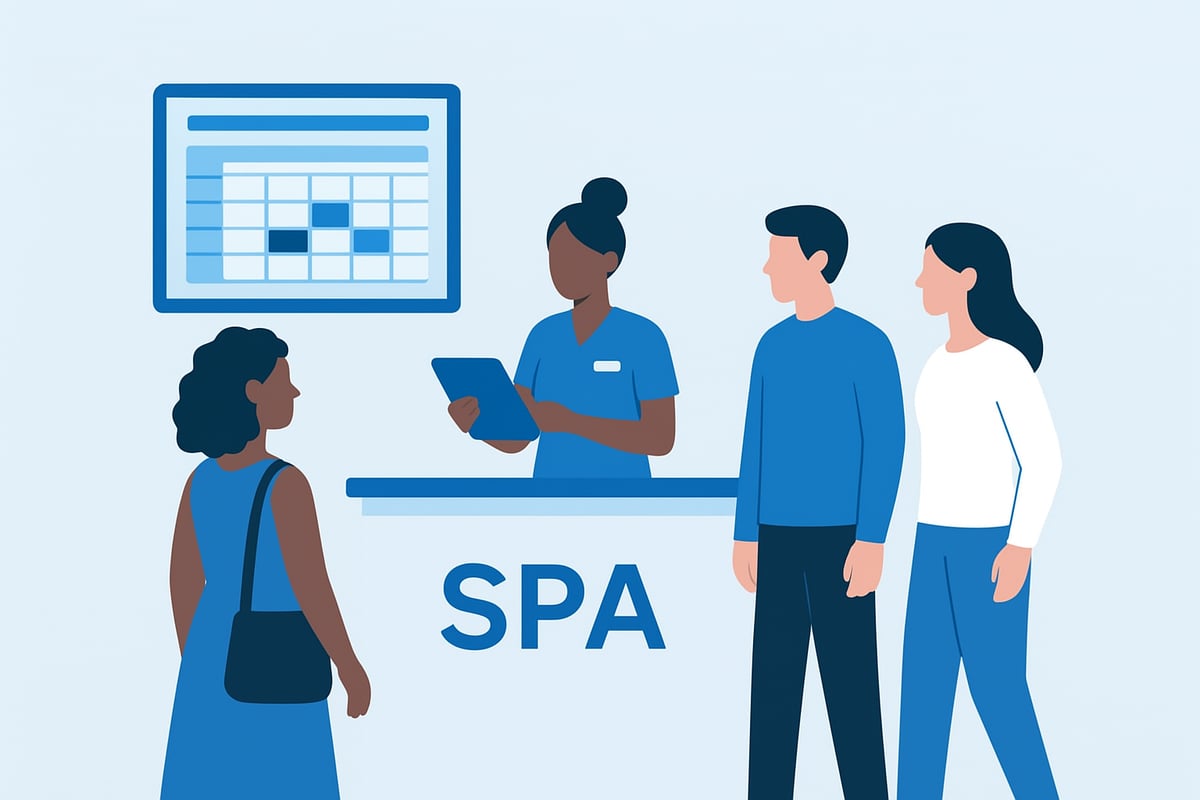
The Evolving Spa Industry Landscape
Spas face challenges from both increased competition and heightened client expectations. The rise of wellness tourism means that spas must offer unique and tailored experiences. Clients are demanding more personalization, quick access to services, and seamless spa scheduling from start to finish.
Consumer behavior is evolving. Most guests now prefer to book online and receive instant confirmation. This trend is pushing spas to invest in digital tools that support these demands. Failing to keep pace with these changes can leave a spa struggling to attract and retain clients.
Common Scheduling Pain Points
Despite the growth, many spas still grapple with classic spa scheduling frustrations. Double bookings, last-minute cancellations, and frequent no-shows can disrupt daily operations and impact revenue. Overwhelmed front desk staff often juggle multiple tasks, leading to administrative bottlenecks and mistakes.
Managing therapist shifts, room assignments, and specialized resources adds complexity, especially for larger spas. A real-world example: one spa faced an annual loss of $10,000 due to these inefficiencies. For more real-life insights, explore these spa scheduling case studies that highlight common pitfalls and solutions.
Regulatory and Compliance Considerations
Spa scheduling in 2025 must also account for a web of regulations. Data privacy laws like GDPR and CCPA require spas to safeguard client information and manage consent properly. Health and safety protocols, including mandatory cleaning intervals and social distancing, affect how appointments are spaced.
Accessibility is another critical factor. ADA compliance ensures that all clients, regardless of ability, can book and enjoy spa services. Spas need systems that can accommodate these requirements without adding friction to the booking process.
The Cost of Poor Scheduling
Neglecting spa scheduling leads to more than just operational headaches. Lost revenue from missed appointments, decreased client retention, and reduced staff morale can add up quickly. Spas relying on manual scheduling see higher rates of no-shows and booking conflicts.
Research shows that spas implementing automated scheduling experience 25% fewer no-shows. One spa chain improved its rebooking rates by 30% after modernizing its scheduling workflow. These results highlight the direct link between efficient scheduling and business performance.
The Opportunity in 2025
Looking ahead, the spa market is poised for around 8% annual growth, driven by rising interest in wellness services and personalized experiences. Spas that embrace change and innovate their spa scheduling processes gain a clear competitive edge.
Efficient scheduling not only maximizes resource utilization but also delivers the premium experiences clients expect. By investing in modern tools and adapting to new trends, spas can thrive in this evolving landscape and build lasting client relationships.
Building the Ideal Spa Scheduling Workflow
Developing an effective spa scheduling workflow is fundamental for operational success and client satisfaction. By breaking down each stage, spa owners can address inefficiencies, prevent booking conflicts, and create a seamless experience for guests and staff alike.
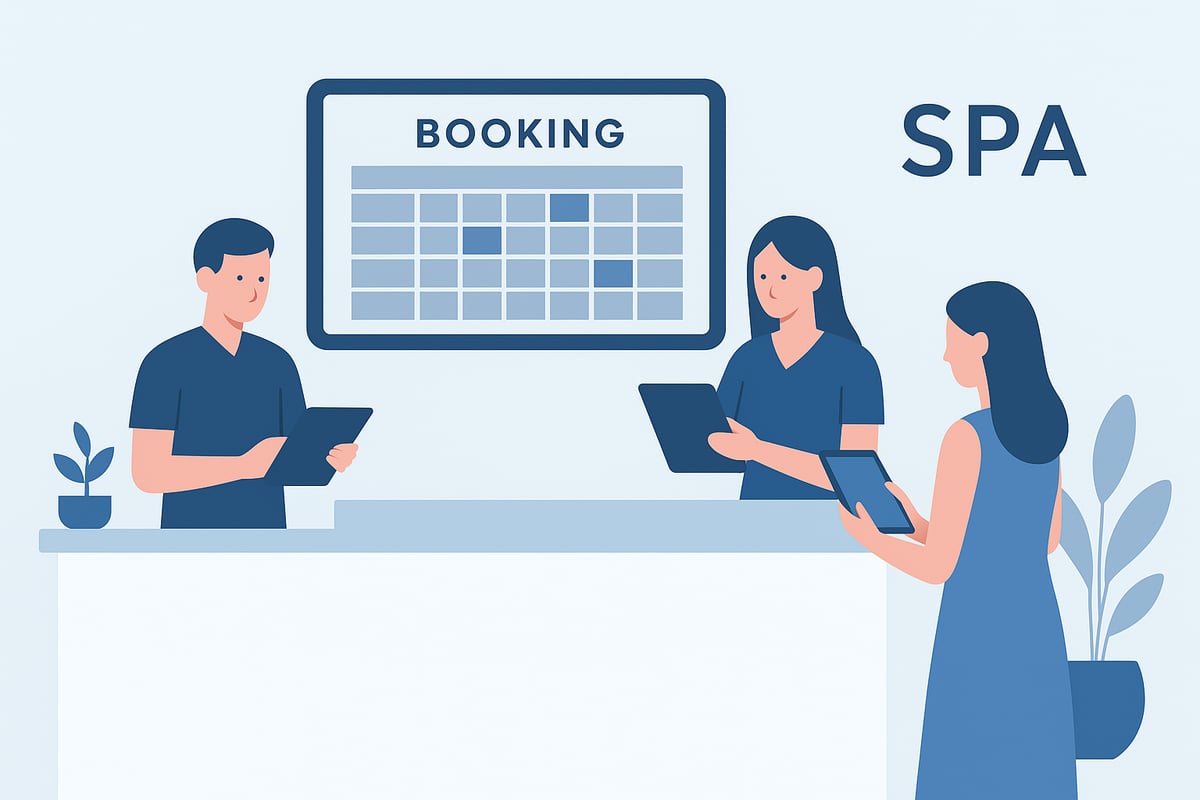
Step 1: Mapping Out Services and Resources
Start by cataloging every service your spa offers, including treatment durations and required staff qualifications. This foundation ensures your spa scheduling system accounts for all variables. For instance, if you offer massages, facials, and hydrotherapy, list each with its time requirements and dedicated rooms or equipment.
- Create an inventory of:
- Service types
- Treatment lengths
- Therapist certifications
- Room/equipment needs
Balancing simultaneous bookings in multi-room spas requires clear mapping, preventing double bookings and resource clashes. A comprehensive overview supports better decision-making for spa scheduling.
Step 2: Setting Up Staff Schedules and Availability
Efficient spa scheduling depends on accurate staff availability. Develop rotating shifts, manage breaks, and plan for vacations to avoid gaps or overlaps. Consider part-time and freelance therapists, factoring in their unique schedules.
- Use digital calendars for transparency
- Communicate shift changes quickly
- Update availability in real time
Staff scheduling errors can lead to 15 percent of booking conflicts, impacting both revenue and morale. By integrating staff management into spa scheduling, you minimize errors and boost productivity.
Step 3: Defining Booking Rules and Policies
Establish clear booking policies to streamline spa scheduling and set client expectations. Define minimum and maximum advance booking windows, cancellation rules, and late arrival or no-show fees.
- Sample booking policies:
- 24-hour cancellation notice
- No-show fee for missed appointments
- Late arrivals may reduce treatment time
Using policy templates from leading spas can simplify this process. Transparent guidelines protect your business and foster trust, making spa scheduling smoother for all parties.
Step 4: Implementing Online Booking Options
Offering online booking is now essential for spa scheduling in 2025. Clients expect the convenience of reserving their treatments anytime, anywhere. Integrate booking forms on your website and social media to capture more appointments.
- Benefits:
- 24/7 access for clients
- Reduces front desk burden
- Supports instant confirmations
A robust Online spa scheduling solution can centralize these features, making it easier for spas to manage appointments and boost booking rates outside traditional hours.
Step 5: Automating Client Communications
Automation is a game-changer for spa scheduling. Send appointment confirmations, reminders, and follow-up messages automatically to reduce no-shows and encourage rebooking. Personalize communications with birthday offers or loyalty rewards.
- Automation examples:
- SMS/email reminders
- Thank you messages post-visit
- Feedback requests
Automated reminders have been shown to cut no-shows by up to 40 percent, making spa scheduling more reliable and less stressful for your team.
Step 6: Streamlining Payment and Check-In Processes
Modernize your spa scheduling workflow by enabling contactless payments and digital check-in. Secure deposits can reduce last-minute cancellations, while digital consent forms speed up the arrival process.
- Streamlining tips:
- Accept online payments during booking
- Offer digital check-in kiosks
- Store consent forms securely
Spas with online payment options often see 20 percent higher pre-booking rates, highlighting the impact of integrating payments into spa scheduling.
Step 7: Monitoring and Refining the Workflow
Continuous improvement is vital for best-in-class spa scheduling. Track key metrics like booking rates, cancellations, and staff utilization. Gather feedback from clients and staff to identify bottlenecks.
- KPIs to monitor:
- No-show rates
- Average booking lead time
- Staff occupancy levels
Conduct monthly workflow reviews and adjust processes as needed. Even small refinements can lead to a 10 percent gain in efficiency, further enhancing your spa scheduling strategy.
Leveraging Technology for Efficient Spa Scheduling
Today, technology is at the heart of efficient spa scheduling. With client expectations rising and the pace of business accelerating, relying on manual methods is no longer an option for successful spas. Innovative tools are transforming the way appointments are managed, helping spas deliver seamless experiences while boosting revenue and client retention.
The Role of Spa Scheduling Software
Spa scheduling software centralizes appointment management, staff coordination, and resource allocation. With a unified dashboard, spa owners can see real-time availability, reduce booking conflicts, and assign the right therapist or room for each treatment. This technology also automates routine tasks, freeing up front desk staff to focus on client service.
For example, spas that switched to digital solutions have reported a 50% reduction in administrative hours. By minimizing manual entry and double bookings, spa scheduling software helps maintain accuracy and professionalism, leading to higher client satisfaction and increased rebooking rates.
Key Features to Look For in 2025
When evaluating spa scheduling solutions for 2025, several features are essential. A mobile-friendly interface ensures both clients and staff can access schedules anywhere. Integration with payment gateways, CRM, and marketing tools streamlines operations and enhances communication.
Artificial intelligence is another key advancement. AI-powered scheduling can analyze trends, suggest optimal slots, and predict no-shows. Advanced analytics provide actionable insights to help spas make data-driven decisions. With the right features, spa scheduling becomes a growth engine rather than an administrative burden.
Benefits of Cloud-Based and Mobile Solutions
Cloud-based spa scheduling platforms offer flexibility that on-premise systems cannot match. Staff can update appointments, check client histories, and manage resources from any device, whether they are at the front desk or moving between treatment rooms.
Automatic updates and secure cloud storage protect sensitive data while minimizing downtime. Multi-location chains benefit from seamless coordination, as schedules are synced across sites instantly. With mobile apps, therapists and managers stay connected, making spa scheduling more agile and responsive to client needs.
Salon Booking System: A Comprehensive Solution for Spas
One standout option for spa scheduling is the Salon Booking System, designed specifically for spas and wellness businesses. This platform offers user-friendly online booking, robust staff and resource management, and automated reminders to reduce no-shows.
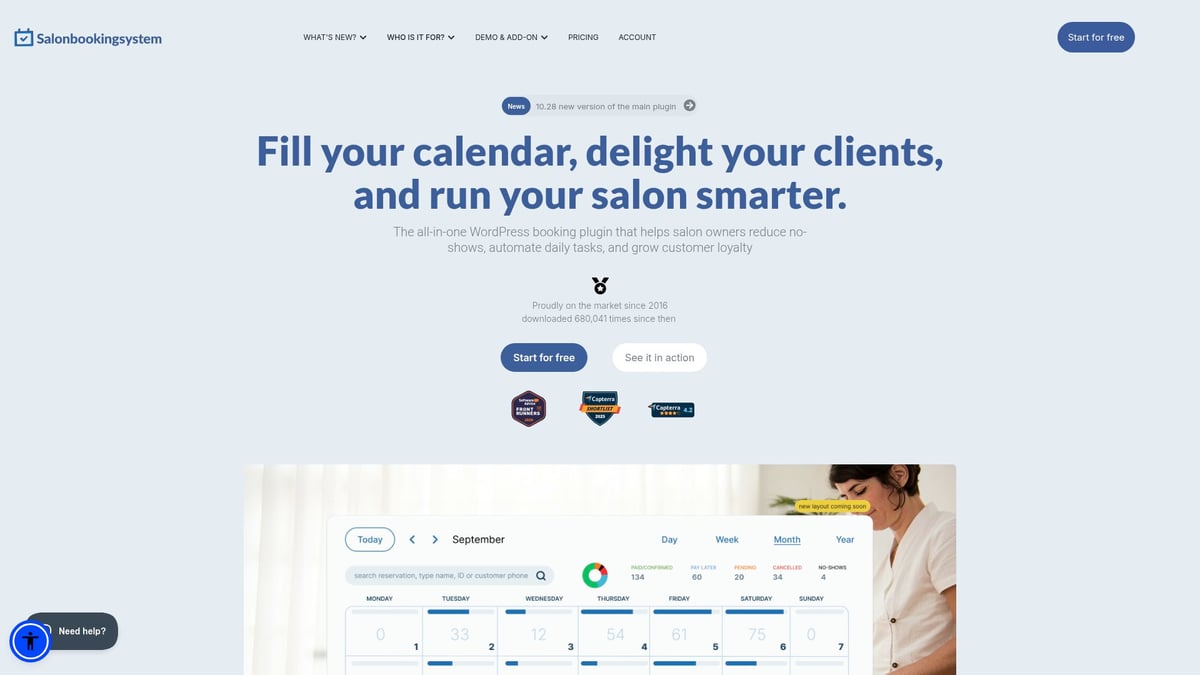
The Salon Booking System also supports multi-location operations and integrates with popular payment providers. For those seeking advanced features, the Spa appointment automation features page highlights how automation can streamline bookings, confirmations, and follow-ups. Thousands of spas worldwide trust this solution to improve efficiency and client experience.
Integration and Automation Opportunities
Integrating spa scheduling software with marketing, loyalty, and feedback systems unlocks new growth opportunities. Automated recurring appointments and group bookings save time, while personalized offers and package deals boost revenue.
For example, spas using automated reminders and follow-up systems have seen a marked drop in no-shows and an increase in repeat business. By connecting every touchpoint, spa scheduling platforms ensure no client falls through the cracks, and every opportunity is maximized.
Security, Compliance, and Data Protection
As spas handle sensitive client information, security and compliance are critical in spa scheduling. Modern systems use encrypted storage and secure payment processing to protect client data. Compliance with regulations like GDPR and CCPA is built in, ensuring privacy is never compromised.
Clients increasingly value data protection, and 90% prefer spas that guarantee security. By choosing compliant spa scheduling solutions, businesses not only protect their reputation but also build lasting trust with their clientele.
Optimizing the Client Experience Through Scheduling
Delivering an exceptional client journey begins with optimizing every aspect of spa scheduling. When clients experience personalized service, simple booking, and timely communication, they are more likely to return and recommend your spa. Each stage of the spa scheduling process offers an opportunity to surprise and delight clients, building loyalty and trust.
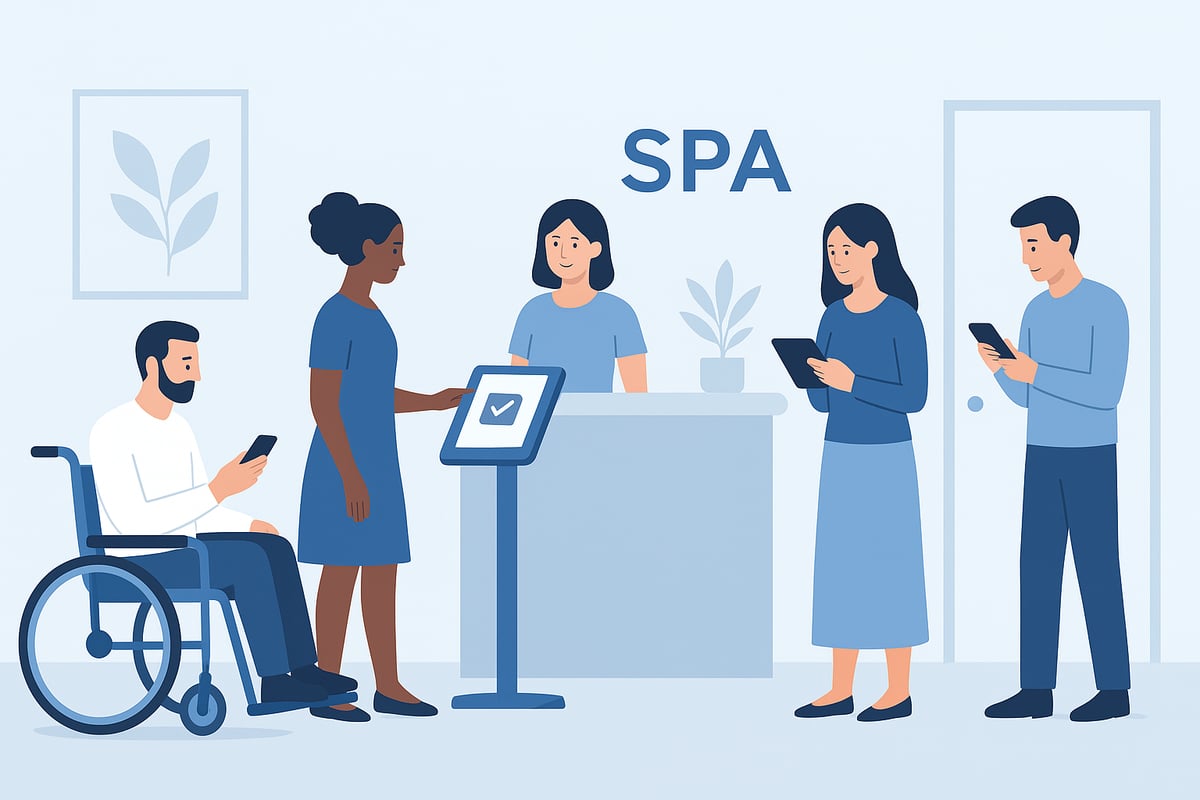
Personalization and Customization
Personalizing the spa scheduling experience helps clients feel valued and understood. Use client profiles to tailor treatment suggestions, recommend therapists, and remember preferences. Offer curated add-ons and packages during booking to enhance each visit.
For instance, a returning client might receive a special offer for their birthday or be shown services that match previous choices. When spa scheduling software leverages historical data, the process becomes more intuitive and inviting. This approach increases average spend and sets your spa apart as a thoughtful, client-focused destination.
Reducing Friction in the Booking Process
Smooth spa scheduling starts with user-friendly booking forms and a streamlined digital journey. Make sure clients can view real-time availability, select services, and receive instant booking confirmation with minimal data entry. Complex or lengthy booking steps often cause clients to abandon their reservations.
To boost conversions, integrate booking options on your website and social media. Display clear pricing, estimated service times, and available staff. By minimizing barriers in the spa scheduling process, you keep clients engaged and reduce missed opportunities.
Effective Communication and Follow-Up
Clear, proactive communication is essential for client satisfaction in spa scheduling. Automated confirmations, reminders, and thank you messages keep clients informed and reduce no-shows. After each appointment, reach out for feedback and offer incentives for reviews.
Implementing Automatic client follow-up tools can streamline these tasks, freeing your team to focus on service. Personal touches, like loyalty rewards or personalized offers, turn one-time visitors into regulars. Consistent follow-up demonstrates that your spa values every client relationship.
Managing Cancellations, No-Shows, and Waitlists
Handling cancellations and no-shows with care protects your revenue and reputation. Offer flexible rescheduling options and maintain a transparent cancellation policy to build trust. Automated waitlists can quickly fill open slots, ensuring resources are used efficiently.
Spa scheduling platforms that manage these scenarios help recover lost bookings and maintain a steady flow of appointments. Effective management of cancellations and waitlists not only supports your bottom line but also reassures clients that their time is respected.
Loyalty Programs and Retention Strategies
Rewarding repeat clients is a proven way to increase retention and maximize the value of each booking. Integrate loyalty programs directly within your spa scheduling system so clients can easily track points, receive exclusive offers, and book members-only packages.
Encourage clients to rebook before leaving the spa by offering discounts or bonus rewards. When loyalty programs are seamlessly woven into the spa scheduling experience, clients are more likely to return and refer friends, driving sustainable business growth.
Addressing Accessibility and Inclusivity
Inclusive spa scheduling ensures every client can access your services comfortably. ADA-compliant booking interfaces, multilingual options, and time zone awareness help reach a broader audience. Consider accessible web design, large font options, and compatibility with assistive technologies.
By making spa scheduling accessible, you show a commitment to welcoming all clients, including those with special needs or international visitors. This not only expands your market but also strengthens your spa’s reputation for care and professionalism.
Future Trends in Spa Scheduling for 2025 and Beyond
The future of spa scheduling is being shaped by innovation, evolving consumer demands, and technology-driven efficiencies. As we look ahead to 2025 and beyond, spas that embrace emerging trends will not only meet client expectations but also unlock new opportunities for sustainable growth. Here are the essential trends every spa should be watching.
AI and Predictive Scheduling
Artificial intelligence is revolutionizing spa scheduling by automating complex decision-making. AI-driven tools analyze client preferences, staff availability, and historical data to suggest optimal appointment times. This not only fills gaps in the schedule but also reduces manual errors. Predictive algorithms can forecast peak periods, letting managers allocate resources proactively. According to Spa Industry Statistics 2025, spas leveraging AI see a measurable boost in operational efficiency. Integrating AI into spa scheduling helps create a more seamless, personalized experience for both clients and staff.
Virtual Consultations and Hybrid Experiences
The integration of virtual consultations is redefining the client journey. Spas now offer pre-visit video assessments, allowing therapists to understand client needs before arrival. This hybrid approach, combining in-person and remote services, expands a spa’s reach and improves accessibility. Spa scheduling platforms increasingly support video links and digital forms, ensuring smooth transitions between online and offline appointments. As more clients seek flexible options, virtual offerings will become a core part of spa scheduling strategies, enhancing convenience and client satisfaction.
Sustainability and Eco-Friendly Scheduling
Sustainability is becoming a central value in spa scheduling. By optimizing appointment slots, spas can minimize idle time and reduce energy consumption. Digital paperwork, electronic receipts, and green appointment reminders help cut down on waste. Some spas offer eco-friendly booking options, such as low-energy time slots or paperless check-in processes. These initiatives not only appeal to environmentally conscious clients but also support broader sustainability goals. Eco-friendly spa scheduling practices are expected to drive loyalty among a growing demographic that prioritizes green values.
Advanced Analytics and Reporting
Data-driven decision-making is essential for future-ready spa scheduling. Advanced analytics tools track key metrics, including booking trends, staff performance, and revenue per appointment. Managers can use these insights to adjust marketing strategies, refine service menus, or optimize staff schedules. According to the Global Spa Market Forecast 2025-2035, spas using analytics grow revenue faster and adapt more quickly to market changes. In 2025, leveraging analytics will be critical for maintaining a competitive edge in spa scheduling.
Enhanced Client Autonomy and Self-Service
Clients increasingly expect control over their spa scheduling experience. Self-service platforms empower guests to book, reschedule, or cancel appointments at their convenience, often through user-friendly mobile apps or web portals. Some systems offer instant waitlist notifications, keeping the schedule full and clients engaged. The shift toward autonomy not only boosts satisfaction but also reduces administrative workload. As self-service becomes standard, spas must ensure their spa scheduling solutions are intuitive, accessible, and reliable for all users.
Integration with Wearables and Health Platforms
Wellness technology is intersecting with spa scheduling in exciting ways. Many clients now use wearables to track fitness and health goals. Forward-thinking spas are integrating booking systems with these devices and health platforms, allowing for personalized recommendations based on real-time wellness data. For example, a client’s activity level or stress metrics could inform which treatments are suggested during booking. This personalized approach strengthens the connection between daily wellness routines and spa scheduling, enhancing the overall client experience.
Preparing for the Next Wave of Innovation
The evolution of spa scheduling will continue as new technologies and client expectations emerge. Spas that remain agile, invest in staff training, and adopt innovations early will outperform their competitors. Preparing for the future means monitoring market trends, upgrading digital infrastructure, and fostering a culture of continuous improvement. By staying ahead of the curve, spa leaders ensure their spa scheduling processes remain effective, client-focused, and resilient in a rapidly changing landscape.
As you consider the evolving landscape of spa scheduling for 2025, it’s clear that embracing smarter technology is key to staying ahead and delivering the seamless experiences your clients expect. We’ve explored how modern tools not only reduce no shows and administrative headaches but also empower your team to focus on what matters most—exceptional service and client satisfaction. Ready to simplify your workflow and transform your spa’s booking process? You can see the benefits firsthand and take the next step toward a more efficient future when you Start for free.

